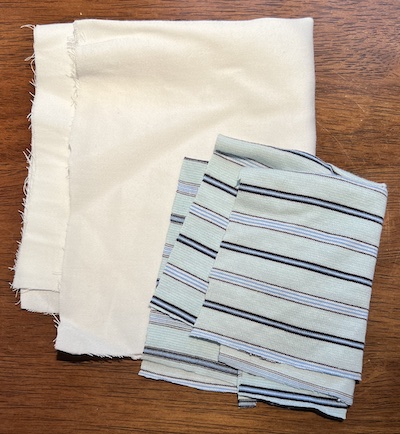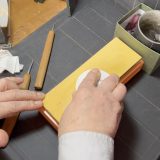The striped ones were originally from Ryushi’s pajama!
As you may notice in his videos, Komada Ryushi, who is my father and netsuke artist, often uses a rag (small piece of cloth) when making netsuke and related tools. Such rags are useful not only for wiping sumi ink and paint, but also for wiping off oil and water from tools and machines.
In our home, we stock them by cutting up 100% cotton items, such as clothes, bed sheets, or pillow cases that are worn out and no longer used. More specifically, we remove the sewn parts and cut the usable parts into 10cm (4 inch) squares or 15cm (6 inch) squares (no need to be rigid about size and shape). The cloth doesn’t have to be white – any color is fine – as long as there is no print on it.
A key point is that it should be made of 100% cotton, relatively smooth in texture with no lint or fluff on the surface. Another key is that it was repeatedly washed. According to Nakano Co., Ltd. (Japanese text: https://www.nakano-inter.co.jp/recycle/column/entry26.html), the reason why repeatedly-washed cotton cloth is better than new one is that repeated washing reduces the grease contained in cotton, and as a result, the cotton absorbs oil and water better, according to the Nakano Co., Ltd.
In addition, rags are commercially available as well (for example at Amazon.co.jp). Interestingly, rags were one of the top export items from Japan during the first half of the 20th century, again, according to Nakano. Another interesting thing is that, one of the Japanese words referring to rags is “wesu” (or sounds more like “wes”), which originated from the English word “waste.”
Text and photo by Komada Makiko


